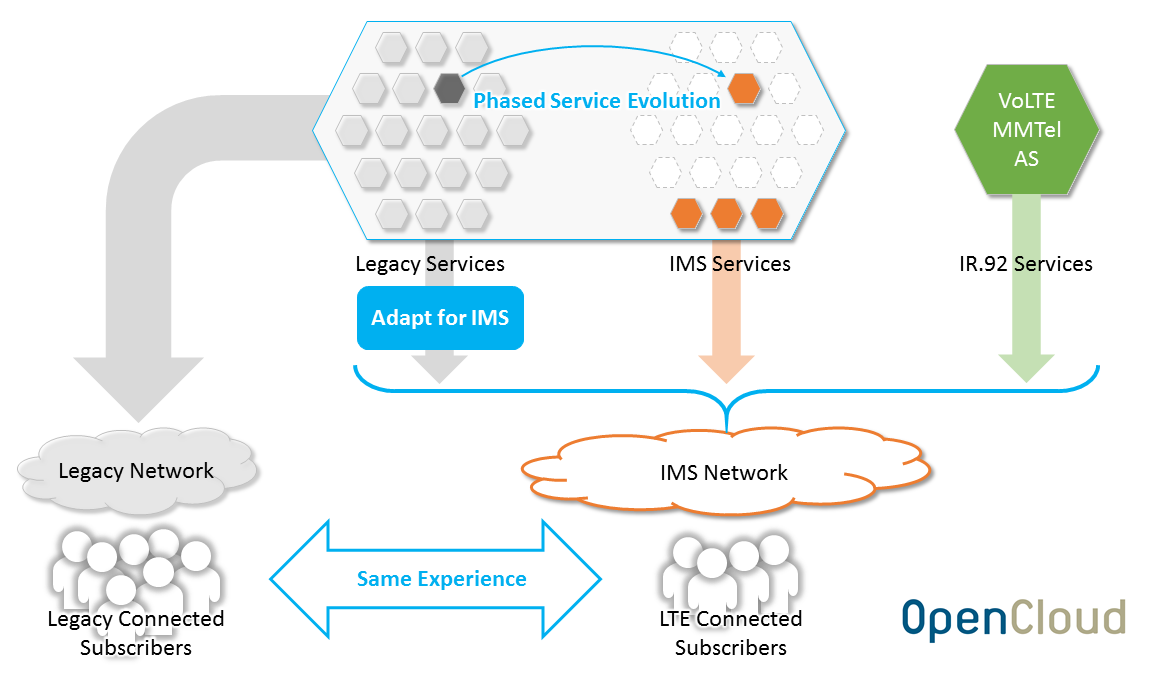Voice over LTE (VoLTE) is emerging as the preferred technology to support real-time voice and video services, as operators move to all IP networking. That is because VoLTE uses the data network efficiently, freeing-up the circuit-switched network spectrum, whilst also offering the opportunity for enhanced voice and video services for subscribers.
For VoLTE, an IP Multimedia Subsystem (IMS) is required to support voice traffic on the data network. Until there is full 4G coverage, to support roamers and whilst subscribers still actively use 2G/3G services, multiple networks will continue to be required. This situation creates a huge challenge for operators – they need to ensure a consistent and common set of services on the IMS network and the circuit switch, says Jonathan Bell, VP Marketing at OpenCloud.
This core network conundrum is often referred to as “service parity”. If this isn’t achieved, subscribers will either not be able to use certain services when on one network or another, or they will receive a different user experience depending on which network they are using, causing confusion and disgruntlement.
In the circuit switch network, over the years, new services and additional functionality have been added by operators to improve their vanilla 2G and 3G services. The switch provides only basic call handling capabilities, so these new modifications were created on additional Intelligent Network (IN) platforms in the service layer, which can handle more complex calling capabilities.
The services created have over-time become the fabric of an operator’s service offering, including voicemail, number translation, least-cost routing and mobile roaming. Most importantly, operators have developed premium revenue-generating service for their enterprise customers, with 50 to 100 other services in many networks. These lucrative legacy services, which are still adding value to customers, must also be available for VoLTE on the IMS network unless the users are to experience a “down-grade”.
In the IMS network, the Multimedia Telephony Application Server (MMTel TAS) provides the call handling capabilities for VoLTE, equivalent to those provided by the network switch. However, the GSMA IR.92 VoLTE standard specifies the basic set of call handling capabilities of an MMTel TAS – it does not address the additional services and functionality added to the circuit switch on IN platforms. This means that the IR.92 MMTel alone cannot deliver all the legacy services for VoLTE that users rely on, and currently use when they connect via 2G and 3G networks. Service parity is not achieved.
One option for achieving a consistent set of services across both networks is to re-implement all of the legacy services into the IMS. However, this approach would take a lot of time and is not cost efficient – it is not plausible for operators in a race to offer VoLTE services, whilst keeping OPEX low.
Whilst operators will want to eventually re-implement their active legacy services in due course, doing this under a tight timeframe, all prior to any significant migration of customers to the IMS network is very expensive and risky. It would have a significant impact on network transformation and the promised re-farming of spectrum. Operators need a solution that gives them service parity rapidly, without breaking the bank or providing them with commercial risks.
Fortunately, there is an alternative approach that some cutting-edge operators are now using, that makes it easier and less expensive to deliver service parity in a tight timeframe. They are using an IMS service switching function (IM-SFF) between the IMS core and the legacy circuit-switch network.
This allows IMS users to use the call handling intelligence resident in the legacy IN infrastructure from the IMS network, and so offer users on the IMS network the same services that are available in the circuit switch. Operators can also provide the reverse capability so that new services resident in the IMS network can be made available to legacy network users.
The result is that operators can fast-track the migration of customers to the IMS network and get them using VoLTE, whilst streamlining the development of new services and ensuring they still have access to the legacy ones they value. Migrating to an IMS infrastructure and rolling out VoLTE needn’t be a headache for operators if they select the right technology to aid the process.
The author of this blog is Jonathan Bell, VP Marketing at OpenCloud.
Comment on this article below or via Twitter: @ VanillaPlus OR @jcvplus






